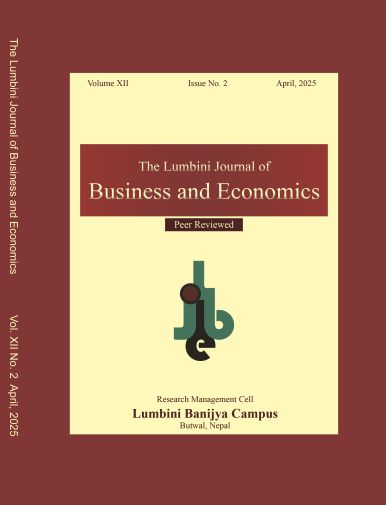Effect of Traditional and Modern Integrated Marketing Communication on Brand Equity
DOI:
https://doi.org/10.3126/ljbe.v12i2.77440Keywords:
Brand equity, advertising, sales promotions, digital marketing, social mediaAbstract
Purpose: The study aims to investigate the effect of traditional and modern integrated marketing communication on brand equity.
Methods: The study followed a descriptive and causal-comparative research design, statistical techniques such as Mean, Standard Deviation, Correlation, and Regression were used for comprehensive data analysis. Data collection was conducted using a convenient sampling technique, targeting over 384 customers. An adopted questionnaire with a seven-point Likert scale was used for data gathering.
Results: The findings reveal sales promotion is the major factor for brand equity. Likewise, it is also found that Female customers prioritize brand equity more than males, indicated by higher mean ranks. This suggests a potential gender difference in attention towards brand equity.
Conclusion: This study shows that combining traditional and digital strategies strengthens brand equity among customers. Traditional marketing methods such as advertising, promotions, and public relations are important for building brand trust and value. Organizations should balance resources between both channels and ensure consistent messaging to increase brand equity, maximizing marketing impact




